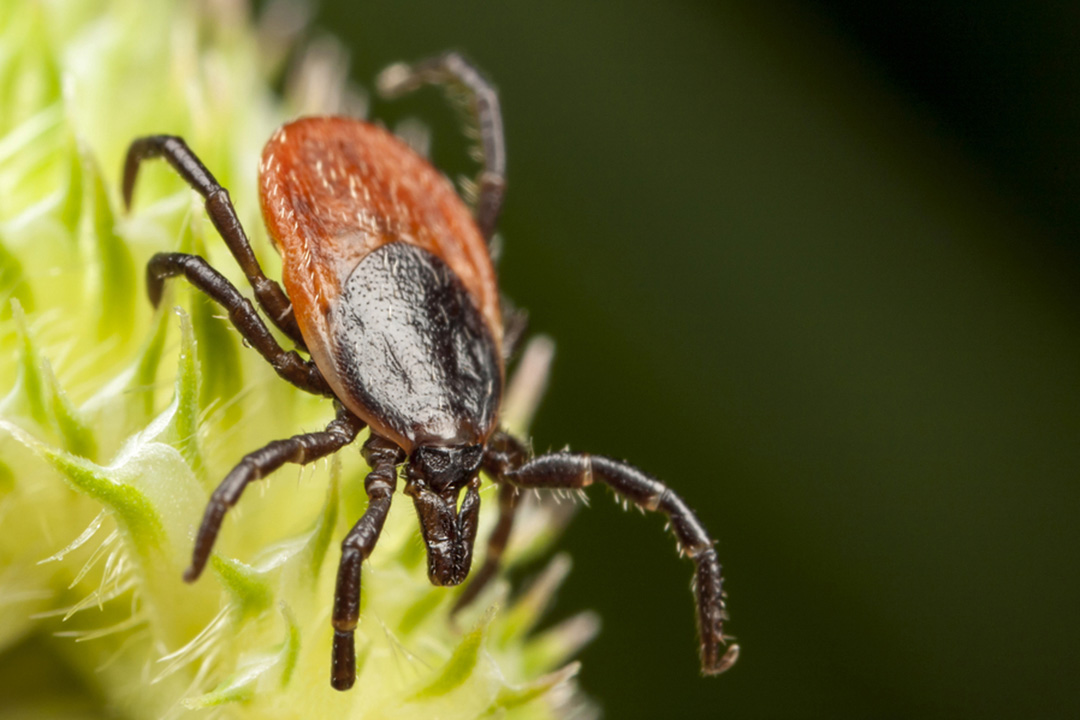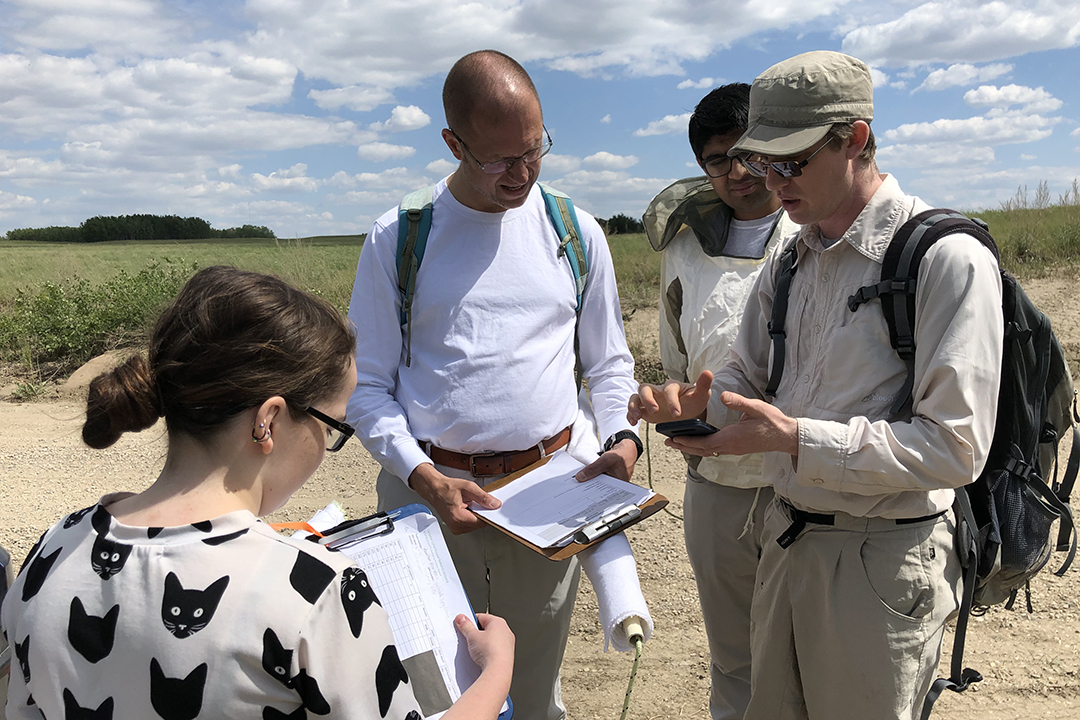
Sask. Health and USask scientists launch online tick surveillance program
The arrival of spring brings warmer weather and longer days, but also increased risk of tick bites for humans and animals.
By Katie Brickman-Young
A new online program, eTick, has expanded into Saskatchewan to track ticks. It will allow University of Saskatchewan (USask) researchers like Drs. Emily Jenkins (DVM, PhD) and Maarten Voordouw (PhD) to monitor ticks and inform Saskatchewan residents of potential health risks.
“We hope that this new online eTick system will be an efficient approach for doing passive surveillance,” said Voordouw, who developed a Saskatchewan-focused tick surveillance web page introducing the new program. Both Voordouw and Jenkins are faculty members at the Western College of Veterinary Medicine (WCVM).
“Our goal is to provide Saskatchewan residents with timely information about their tick bites,” said Voordouw.
Dr. Jade Savage, a biology professor at Bishop’s University in Sherbrooke, Que., created the eTick monitoring platform that tracks ticks in six provinces. Saskatchewan is the first prairie province to join the national network.
“The Saskatchewan Ministry of Health has been collaborating with researchers from the University of Saskatchewan since 2009 to monitor ticks in the province,” said Priya Goundar, zoonotic/environment health consultant with the Government of Saskatchewan. “With eTick successfully implemented in multiple provinces, the Ministry of Health supported the expansion of this platform to Saskatchewan.”
In previous years, labs at USask and the Roy Romanow Provincial Laboratory (RRPL) received tick submissions from residents by mail. Moving to this online system will allow residents to take photos of ticks with their phones and upload them to the online database, where researchers will be able to identify the tick.
“The individual making the submission will receive a prompt message with information on the tick species, guidance on protocols to follow in the event of a tick bite, and associated health risk–if any,” said Goundar. “Additionally, the eTick platform provides an interactive map, updated in real time, identifying the location of tick submissions. With this information easily accessible, the public can take necessary precautions if they are in an area with a large number of ticks.”
In past years, approximately 95 per cent of Saskatchewan submissions have been the American dog tick (which do not transmit Lyme disease), but the need to monitor for other species coming into the province is a top priority.
“In Saskatchewan, we have a couple of other tick species, including the American dog tick, the Rocky Mountain wood tick and the winter tick,” said Voordouw. “Those ticks cannot transmit the Lyme disease pathogen.”
The blacklegged tick (Ixodes scapularis) is found in eastern Canada, including Manitoba, and the western blacklegged tick is found west of the Canadian Rockies. These tick species can transmit Lyme disease, but to date, researchers believe these species have not established themselves in Saskatchewan. The risk of Lyme disease is low in Saskatchewan.
While the risk of encountering tick species that transmit Lyme disease is low in the province, migratory birds can pick up blacklegged ticks in southern regions and carry them to Saskatchewan.
“Things don’t always stay the same,” said Voordouw, noting that reports of Lyme disease in Canada were infrequent until the late 1990s. “Thirty years ago, there was one known population of the blacklegged tick in a southern part of Ontario and now we know of hundreds of established populations of this tick species all over eastern Canada.”
Tick season usually begins in early spring, and ticks are commonly found in tall grass, brush or wooded areas.
“Ticks love warm, sunny days, especially the dog ticks. It depends on the weather, but we expect to see most tick activity in May and June in Saskatchewan,” said Jenkins. “We usually think of tick season as spring, because that’s when American dog ticks are active. But it’s important to be vigilant into the fall, when blacklegged ticks introduced by migratory birds can be active until the first hard frost.”
The eTick website launched at the beginning of April and is the preferred platform, but USask and RRPL labs will also accept tick submissions by mail this year. By 2021, the Ministry of Health’s goal is to use eTick as the only platform for public tick submissions in Saskatchewan.
“Data received through the eTick platform will allow us to monitor the distribution and level of establishment of ticks, specifically blacklegged tick populations and assess the potential risk of Lyme disease and other tick-borne diseases across the province,” said Goundar.
Click on the following links for more information on passive tick surveillance in Saskatchewan or to submit your photos using the eTick website.
Article re-posted on .
View original article.

